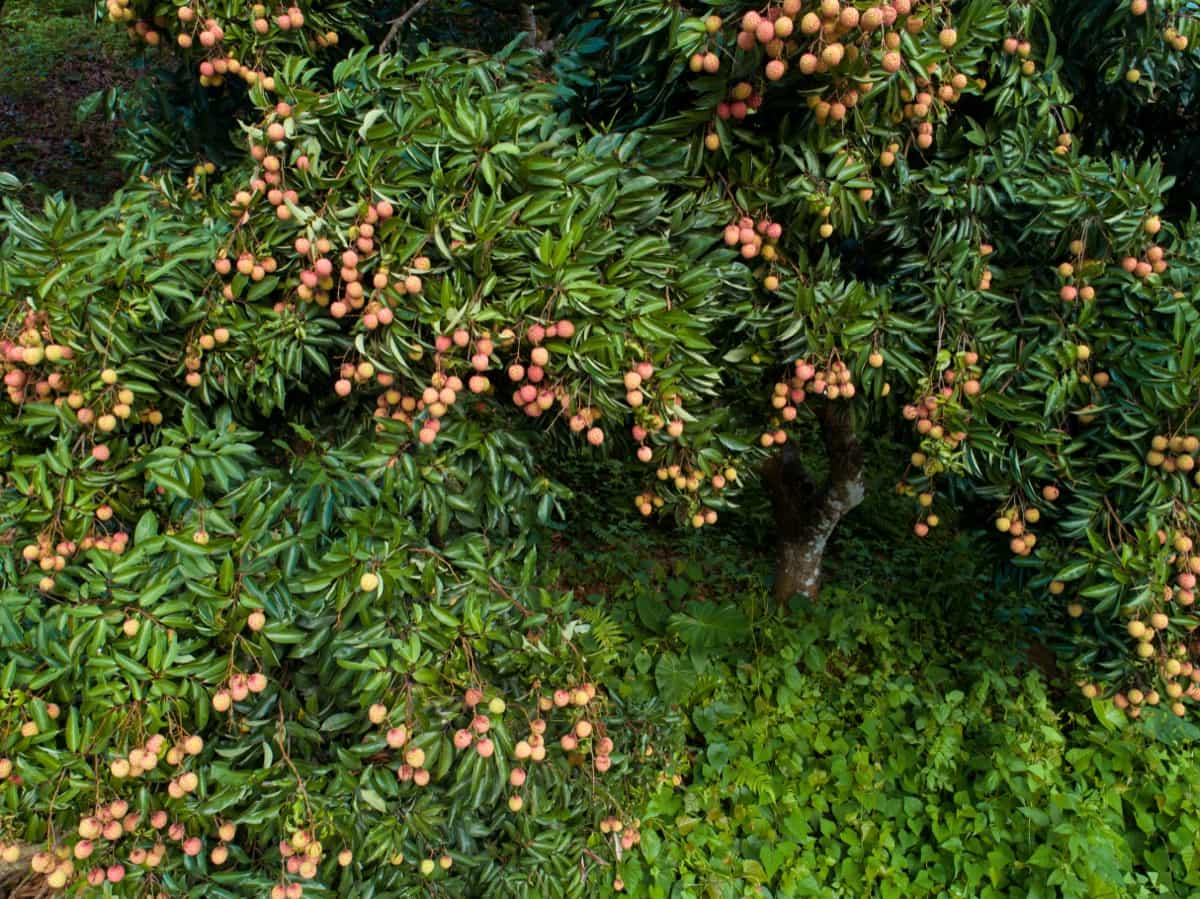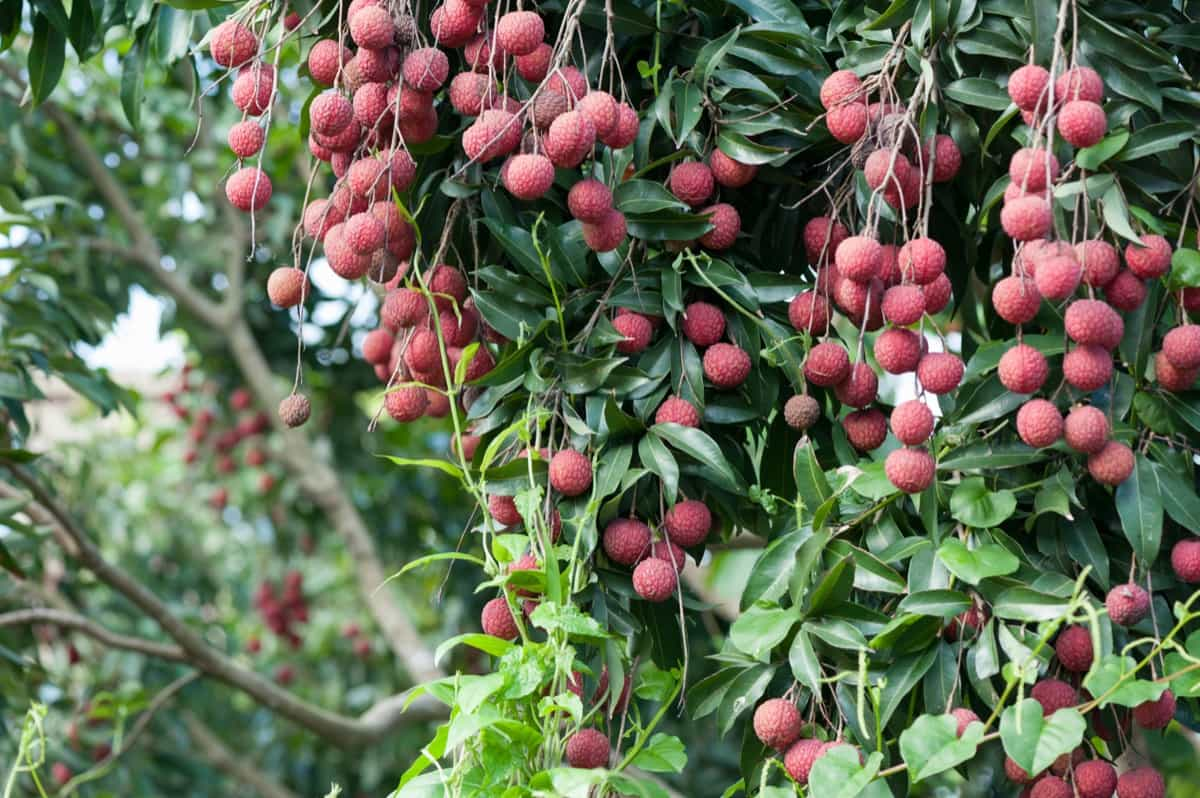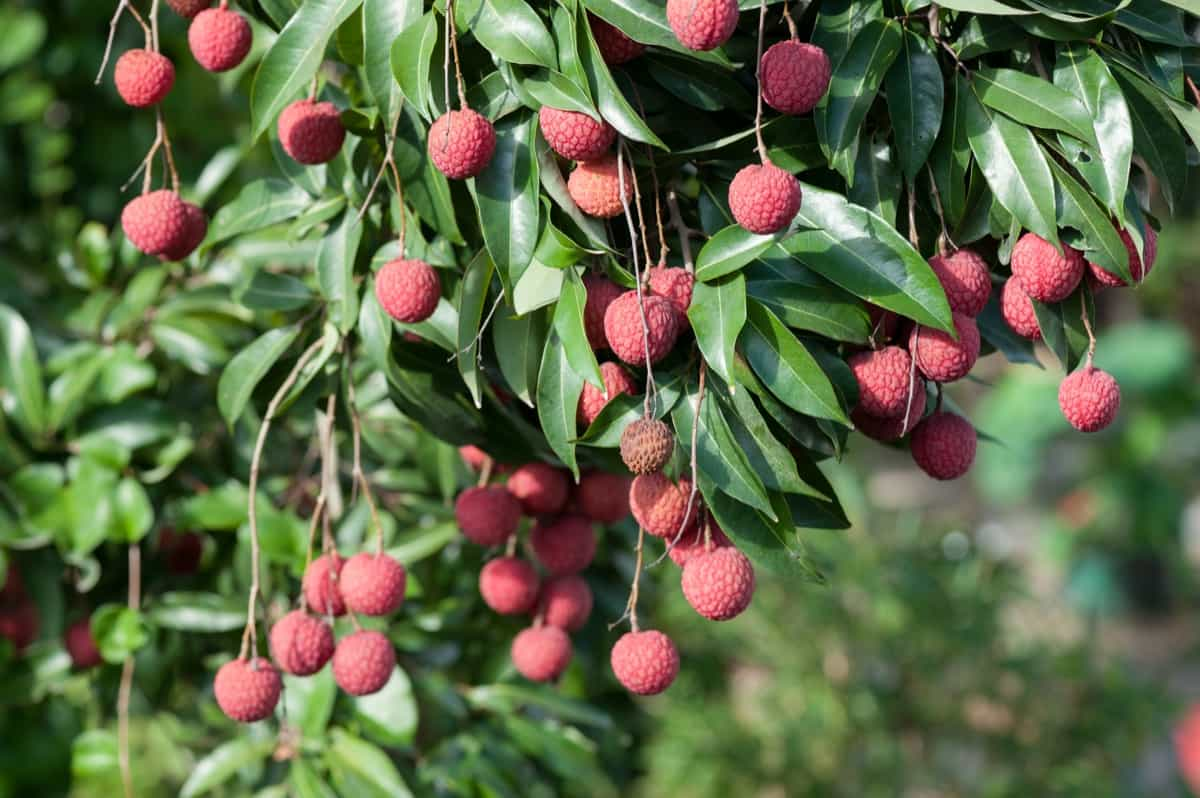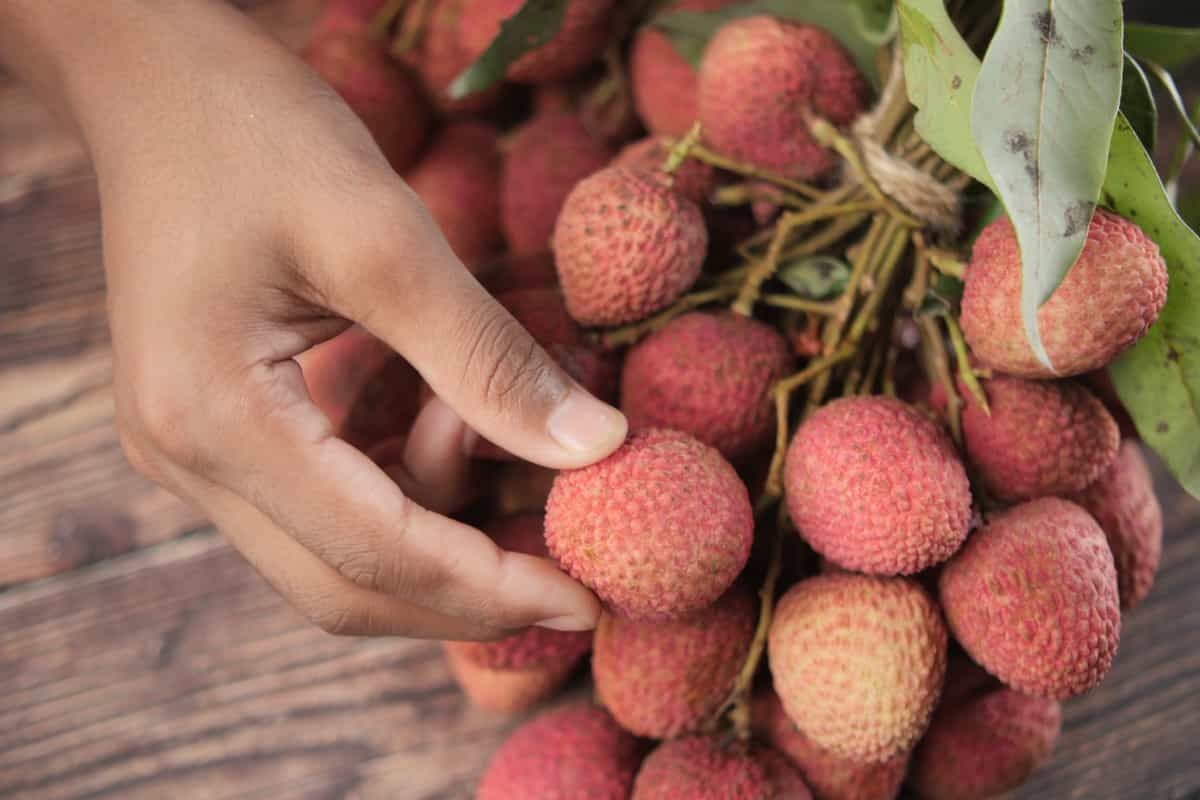Litchi fruits, with their delicate skin and juicy flesh, are a delight to harvest. However, nothing is more disappointing than finding your prized litchis split open due to cracking. Thankfully, there are multiple strategies you can implement to ensure your litchi fruits remain intact and blemish-free. Let’s delve into effective techniques to prevent litchi splitting.

How to Prevent Litchi Splitting
Root Causes of Litchi Cracking
One primary cause of litchi cracking is fluctuations in water availability, particularly during the fruit development stages. When litchi trees experience irregular watering patterns, such as prolonged dry periods followed by heavy irrigation or rainfall, the sudden uptake of water by the fruits can lead to internal pressure buildup, resulting in cracking.
Identifying Factors Leading to Fruit Splitting
To effectively prevent litchi fruit splitting, growers must recognize and address the factors contributing to this issue. Conducting regular assessments of orchard conditions, including soil moisture levels, nutrient status, and weather patterns, can help pinpoint potential risk factors.
Impact of Environmental Conditions on Cracking
Environmental conditions play a significant role in litchi fruit splitting. High humidity levels coupled with sudden changes in temperature can increase the likelihood of cracking. Therefore, implementing measures to regulate environmental conditions, such as providing adequate shading and ventilation in the orchard, can help mitigate this risk.
Optimal Irrigation for Litchi Trees
Proper irrigation management is essential for preventing litchi fruit splitting. Implementing a consistent watering schedule and ensuring adequate soil moisture levels throughout the growing period can help minimize stress on the trees and reduce the risk of cracking.
Scheduling Water Application to Avoid Stress
When irrigating litchi trees, it’s essential to schedule water application to avoid stress-inducing fluctuations in soil moisture levels. Drip irrigation systems or mulching can help maintain even soil moisture, reducing the likelihood of fruit splitting.
Techniques to Maintain Even Soil Moisture
Maintaining even soil moisture levels is crucial for preventing litchi fruit splitting. Mulching with organic materials such as paddy straw or compost can help retain soil moisture and regulate temperature, creating optimal conditions for fruit development.
Nutrient Management to Prevent Splitting
Proper nutrient management is vital for preventing litchi fruit splitting. Ensuring balanced fertilization practices and adequate levels of key nutrients such as potassium, calcium, and boron can help strengthen fruit skins and reduce the risk of cracking.
In case you missed it: How to Prevent Nectarine Cracking: Strategies for Growing Split-free Nectarine Fruits

Key Nutrients to Enhance Litchi Skin Elasticity
Potassium and calcium are particularly important for enhancing litchi skin elasticity and reducing the likelihood of fruit splitting. These nutrients play essential roles in cell wall integrity and osmotic regulation, helping to maintain turgor pressure and structural strength in the fruit.
Fertilization Practices for Stronger Fruit
Implementing targeted fertilization practices can help promote stronger, more resilient litchi fruits. Applying organic matter such as paddy straw compost or manure can improve soil structure and nutrient availability, supporting healthy fruit development and reducing the risk of splitting.
Soil Health and Its Role in Preventing Cracks
Healthy soil is the base of a productive litchi orchard and plays a critical role in preventing fruit splitting. Investing in soil health through practices such as organic mulching, cover cropping, and minimal tillage can improve soil structure, enhance water retention, and support robust root development, ultimately reducing the risk of cracking.
Enhancing Soil Structure for Better Water Retention
Improving soil structure is essential for better water retention and nutrient availability in litchi orchards. Incorporating organic matter into the soil through mulching or composting can enhance soil structure, promote microbial activity, and increase water infiltration and retention, reducing the likelihood of fruit splitting.
Importance of Organic Matter for Soil Health
Organic matter is a valuable resource for improving soil health and preventing litchi fruit splitting. Organic mulches such as compost, straw, or leaf litter can enhance soil structure, increase water retention, and promote nutrient cycling, creating a more resilient growing environment for litchi trees.
Effective Canopy Management
Proper canopy management is essential for optimizing light penetration, airflow, and fruit quality in litchi orchards. Pruning practices that promote balanced growth and sunlight exposure can help reduce the risk of fruit splitting by improving fruit ripening and minimizing stress on the trees.
Pruning for Balanced Growth and Sunlight Exposure
Pruning litchi trees to achieve balanced growth and sunlight exposure is critical for preventing fruit splitting. Removing overcrowded branches, opening up the canopy, and maintaining a balanced tree structure can improve airflow and light penetration, reducing humidity levels and minimizing the risk of cracking.
Reducing Internal Humidity to Minimize Splitting Risk
Reducing internal humidity levels within the litchi canopy is essential for minimizing the risk of fruit splitting. Proper canopy management practices, such as thinning out excess fruit and promoting airflow through pruning, can help reduce humidity levels and improve fruit quality.
In case you missed it: 10 Reasons Why Lemon Tree is Not Blooming and Fruiting: Remedies and Treatment

Balancing Crop Load
Balancing the crop load is crucial for preventing litchi fruit splitting. Thinning out excess fruit clusters early in the season allows the remaining fruits to receive adequate resources for proper development, reducing competition and the risk of cracking.
Thinning Out Excess Fruit to Reduce Splitting
Thinning out excess fruit in litchi trees is a vital practice to reduce fruit splitting. By selectively removing immature or damaged fruits early in the season, growers can alleviate stress on the tree and promote better development in the remaining fruits. Timing, selective removal, even distribution, and moderation are key considerations when thinning. This proactive measure, alongside other cultural practices, contributes to overall orchard health and productivity.
Strategies for Ensuring Optimal Fruit Development
Implementing strategies to ensure optimal fruit development is key to preventing litchi fruit splitting. This includes maintaining consistent irrigation, nutrient management, and canopy management practices throughout the growing season to reduce stress on the trees and promote healthy fruit growth.
Growth Regulators in Litchi Cultivation
The use of growth regulators can be an effective tool for controlling fruit growth rates and minimizing the risk of litchi fruit splitting. However, it’s essential to use these products judiciously and according to label instructions to avoid adverse effects on fruit quality and tree health.
Using Plant Growth Regulators to Control Fruit Growth Rates
Plant growth regulators can help regulate fruit growth rates and reduce the incidence of litchi fruit splitting. Gibberellic acid, for example, can be applied at specific stages of fruit development to promote uniform growth and prevent cracking.
Application Methods for Preventing Cracking
When applying growth regulators to litchi trees, it’s essential to follow recommended application methods to ensure optimal efficacy and minimize the risk of phytotoxicity. This may include foliar sprays, trunk injections, or soil drenches, depending on the product and target application.
Integrated Pest and Disease Management (IPDM)
Effective pest and disease management is key for keeping fruit quality and minimizing the risk of litchi fruit splitting. Implementing an integrated pest and disease management (IPDM) approach that combines cultural, biological, and chemical control methods can help prevent damage to the fruit and trees.
Monitoring for Pests and Diseases That Weaken Fruit Integrity
Regular monitoring for pests and diseases that weaken fruit integrity is crucial for preventing litchi fruit splitting. Common pests such as fruit borers and diseases such as anthracnose can compromise fruit quality and increase susceptibility to cracking if left untreated.
Preventative and Reactive Measures
Implementing preventative measures such as cultural practices, sanitation, and biological control can help minimize pest and disease pressure and reduce the risk of fruit splitting. In cases where outbreaks occur, timely application of targeted chemical controls may be necessary to prevent significant damage to the crop.
Mitigating Environmental Stress
Environmental stressors such as drought, heat, humidity, and extreme weather attributes can increase the risk of litchi fruit splitting. Implementing mitigation strategies such as irrigation scheduling, shading, and windbreaks can help minimize stress on the trees and reduce the likelihood of cracking.
In case you missed it: 10 Reasons Why Pomegranate Tree is Not Blooming and Fruiting: Remedies and Treatment

Protecting Litchi Trees from Adverse Weather Conditions
Protecting litchi trees from adverse weather conditions is essential for preventing fruit splitting and maintaining overall tree health. This may involve installing protective structures such as shade cloth or windbreaks, particularly in regions prone to extreme heat, wind, or storms.
Adaptive Measures for Climate Resilience
As climate change continues to influence agricultural systems, growers must adopt adaptive measures to enhance the resilience of litchi orchards to changing environmental conditions. This may include selecting climate-resilient cultivars, implementing water-saving technologies, and diversifying cropping systems to minimize risk and ensure long-term sustainability.
Harvesting Practices to Reduce Damage
Proper harvesting practices are essential for minimizing damage to litchi fruits and reducing the risk of splitting. Harvesting fruits at the optimal stage of ripeness, handling them carefully to avoid bruising or puncturing, and using appropriate harvesting tools and techniques can help preserve fruit quality and integrity.
Timing and Techniques to Avoid Cracking at Harvest
Harvesting litchi fruits at the right time and using proper techniques can help prevent cracking and maintain fruit quality. Fruits should be harvested when fully mature but still firm, avoiding overripe or underripe specimens. Careful handling during harvest and post-harvest handling can further minimize the risk of damage.
Post-Harvest Handling to Maintain Fruit Quality
Proper post-harvest handling is essential for maintaining the quality and marketability of litchi fruits. This includes prompt cooling, grading, and packing to preserve freshness and minimize the risk of physical damage or spoilage during storage and transport.
Conclusion
Preventing litchi fruit splitting requires a holistic approach that addresses various factors influencing fruit quality and integrity. By implementing proper cultural practices, managing environmental stressors, and adopting integrated pest and disease management strategies, growers can minimize the risk of fruit splitting and ensure a bountiful harvest of crack-free litchi fruits.
- Deworming Schedule for Dogs/Puppies: A Beginners Guide
- How to Prevent and Control Parasites in Goats
- Beneficial Insects in Pest Management
- Natural Solutions for Pest Control in Flower Gardens
- Types of Fungicides Used in Agriculture
- Common Issues in the Fruit Development Stage of Pomegranate Farming
- Fruit Development Issues in Papaya: Easy Solutions and Treatment
- Soil-Borne Diseases and How to Protect Your Plants
- Practices to Prevent Disease Spread in the Garden